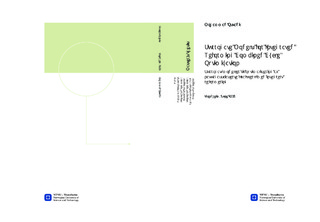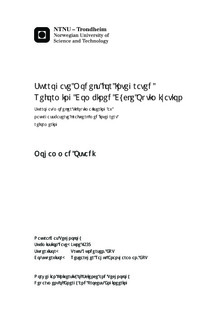| dc.contributor.advisor | Gundersen, Truls | nb_NO |
| dc.contributor.advisor | Anantharaman, Researcher Rahul | nb_NO |
| dc.contributor.author | Ostadi, Mohammad | nb_NO |
| dc.date.accessioned | 2014-12-19T11:51:19Z | |
| dc.date.available | 2014-12-19T11:51:19Z | |
| dc.date.created | 2013-10-15 | nb_NO |
| dc.date.issued | 2013 | nb_NO |
| dc.identifier | 656468 | nb_NO |
| dc.identifier | ntnudaim:10090 | nb_NO |
| dc.identifier.uri | http://hdl.handle.net/11250/235333 | |
| dc.description.abstract | In the light of increasing concerns about climate change, greenhouse gas mitigation technologies have gained growing attention. Integrated Reforming Combined Cycle (IRCC) is one of the processes for reducing CO2 emissions from natural gas (NG) power plants, which could help attenuate the rise in atmospheric temperature.The reforming process, an important part of an IRCC, is a chemical process for fuel conversion and the process model involves chemical equilibrium and reaction kinetics. A first principles model of this process in an optimization framework will be very complex and may involve solving of hundreds (or thousands) of nonlinear equations and therefore is computationally expensive. A so-called surrogate model (or metamodel) is a multivariable general purpose mapping that can be used in an optimization framework to reduce the model complexity and thus reduce computational load in the optimization to something that is manageable. There are many different methods for developing surrogate models varying from "simple" polynomial models to complicated models such a Kriging etc. Objectives for the thesis work were development of Kriging and Polynomial surrogate models for two configurations of IRCC process: air blown and oxygen blown ATR. The figure below gives a brief overview of possible alternatives in the design of an IRCC with CO2 capture. A total of 30 cases were considered for metamodel building with different sample sizes and different number of inputs to metamodels. The built metamodels were compared based on their accuracy in predicting the outputs. Kriging models yield results that are equal or slightly better than Polynomial models in accuracy. One Polynomial and Kriging model were tested in an existing optimization framework to identify a model with best computational cost-accuracy trade-off. The Polynomial model demonstrated faster performance than the Kriging model. Polynomial models with a predictive accuracy close to Kriging models but with an advantage of less computational time will most likely be used for optimization of IRCC plants. The contribution that this thesis has made is better understanding of the process and metamodel building. | nb_NO |
| dc.language | eng | nb_NO |
| dc.publisher | Institutt for energi- og prosessteknikk | nb_NO |
| dc.title | Surrogate Models for Integrated Reforming Combined Cycle Optimization: Surrogat-modeller til optimalisering av naturgassbaserte kraftverk med integrert reformering | nb_NO |
| dc.type | Master thesis | nb_NO |
| dc.source.pagenumber | 110 | nb_NO |
| dc.contributor.department | Norges teknisk-naturvitenskapelige universitet, Fakultet for ingeniørvitenskap og teknologi, Institutt for energi- og prosessteknikk | nb_NO |

